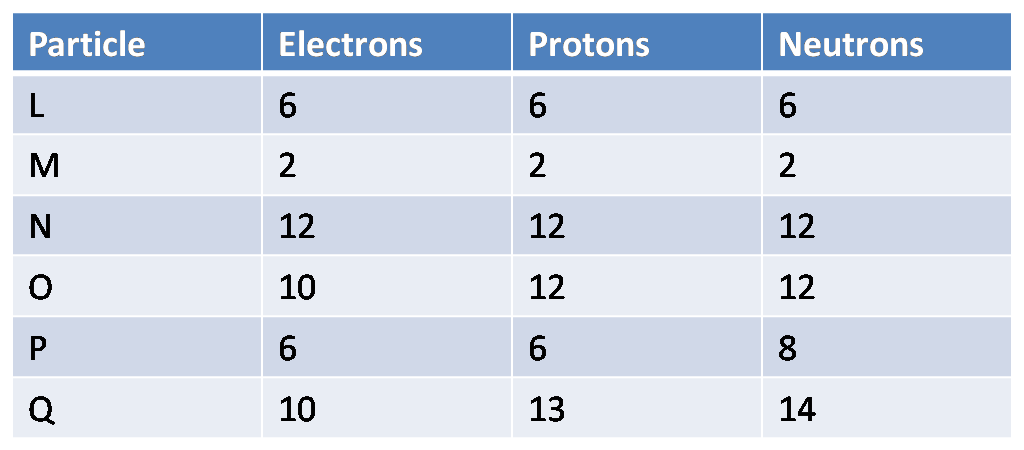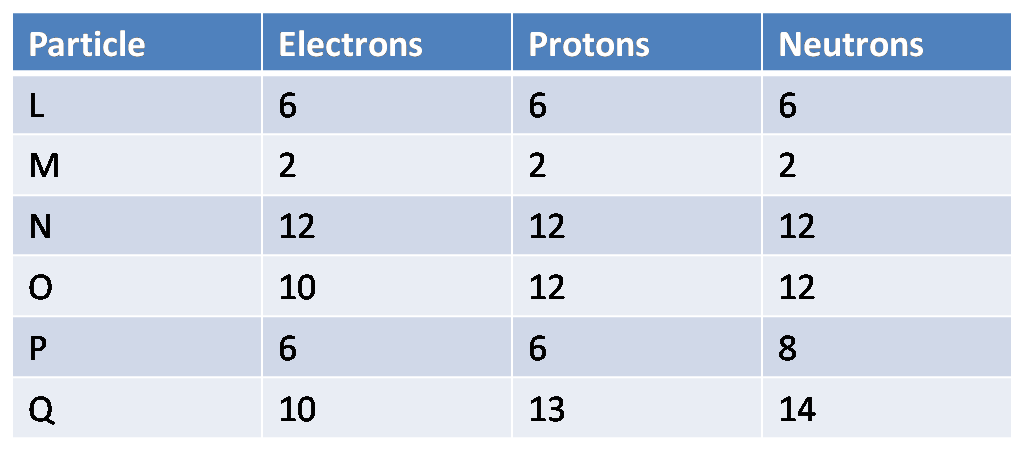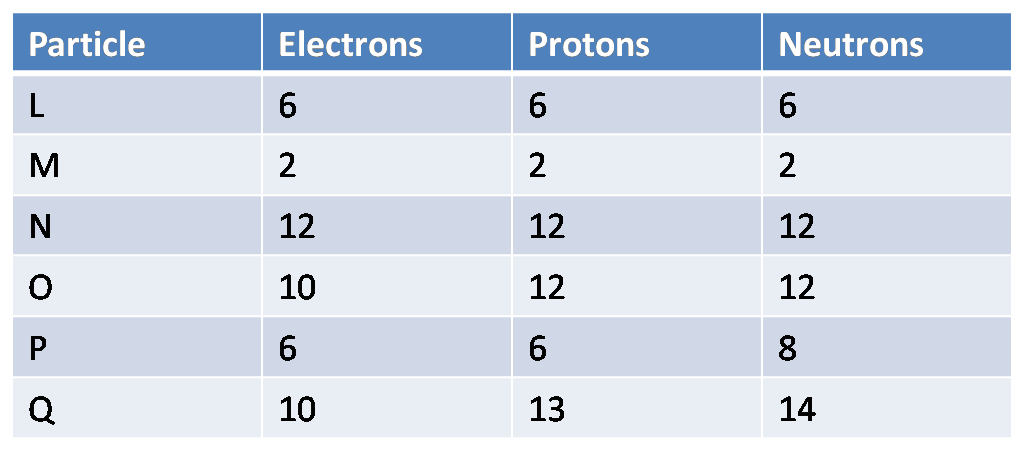Atomic Structure: Isotopes & Ions Quiz

Protons and neutrons are the heaviest particles in an atom and as a result they make up most of the mass of the atom. If you Change the number of neutrons in an atom it becomes an isotope, change the number of electron and it becomes an ion. Take quiz to see how well you understand isotopes and ions.
- 1.
How do I form Li+?
- A.
Add one electron
- B.
Remove one proton
- C.
Remove one electron
- D.
Add one neutron
Correct Answer
C. Remove one electronExplanation
How do you remove protons or neutrons from the nucleus? That requires a HUGE HUGE amount of energy..Rate this question:
-
- 2.
Fe 2+ and Fe3+ are different __________.
- A.
Ions
- B.
Isotopes
- C.
Elements
- D.
Atoms
Correct Answer
A. IonsExplanation
Fe2+ and Fe3+ are different ions because they have different charges. Fe2+ has a positive charge of +2, while Fe3+ has a positive charge of +3. This difference in charge is due to the different number of electrons present in each ion. Therefore, Fe2+ and Fe3+ are distinct and separate entities in terms of their chemical properties and behavior.Rate this question:
-
- 3.
Cu2+ and Zn2+ are examples of ________.
- A.
Anions
- B.
Cations
- C.
Isotopes
- D.
Molecules
Correct Answer
B. CationsExplanation
Cu2+ and Zn2+ are examples of cations because they are positively charged ions. Cations are formed when an atom loses one or more electrons, resulting in a net positive charge. In the case of Cu2+ and Zn2+, they have lost two electrons each, giving them a 2+ charge. Anions, on the other hand, are negatively charged ions formed when an atom gains one or more electrons. Isotopes refer to different forms of an element with the same number of protons but different numbers of neutrons. Molecules are formed when two or more atoms chemically bond together.Rate this question:
-
- 4.
Which is the correct symbol for the element with 8 protons and 10 electrons?
- A.
N3-
- B.
O2-
- C.
O3-
- D.
F-
Correct Answer
B. O2-Explanation
The correct symbol for the element with 8 protons and 10 electrons is O2-. This is because oxygen (O) has 8 protons in its nucleus, and in order to have a charge of -2, it gains 2 extra electrons. Therefore, the symbol O2- represents an oxygen ion with a charge of -2.Rate this question:
-
- 5.
Which is the correct symbol for an O atom with 8 protons, 9 neutrons and 8 electrons?
- A.
16 O 8
- B.
17 O 8
- C.
18 O 8
- D.
18 O 9
Correct Answer
B. 17 O 8Explanation
The symbol "17 O" represents an oxygen atom with 8 protons, 9 neutrons, and 8 electrons. The atomic number of an element indicates the number of protons in its nucleus, and in this case, it is 8. The mass number of an element is the sum of its protons and neutrons, and in this case, it is 17. Therefore, the correct symbol for an oxygen atom with these characteristics is "17 O".Rate this question:
-
- 6.
How many electrons does Li+ atom have?
- A.
0
- B.
1
- C.
2
- D.
3
Correct Answer
C. 2Explanation
Li+ is a lithium ion that has lost one electron. Since lithium has 3 electrons in its neutral state, when it loses one electron to form the Li+ ion, it is left with 2 electrons. Therefore, the correct answer is 2.Rate this question:
-
- 7.
How many protons, neutrons and electrons does Be2+ have?
- A.
4, 5, 2
- B.
4, 3, 4
- C.
4, 3, 6
- D.
4, 4, 2
Correct Answer
A. 4, 5, 2Explanation
Beryllium (Be) has an atomic number of 4, which means it has 4 protons. The atomic mass of beryllium is 9, so subtracting the atomic number from the atomic mass gives us the number of neutrons, which is 5. The charge of Be2+ indicates that it has lost two electrons, so the number of electrons is 2. Therefore, the correct answer is 4 protons, 3 neutrons, and 2 electrons.Rate this question:
-
- 8.
N3- has __________.
- A.
7 protons and 4 electrons
- B.
7 protons and 10 electrons
- C.
7 protons and 11 electrons
- D.
8 protons and 11 electrons
Correct Answer
B. 7 protons and 10 electronsExplanation
p = e ; the number of protons equates the number of electrons when the atom is electrically neutral. In this case, 3 electrons was added to give nitrogen the overall -3 charge.Rate this question:
-
- 9.
The table shows the atomic structure of 6 particles, represented by the letters L to Q. The particles are atoms or ions. The letters are not the symbol of the elements. Which 2 particles are ions?
Correct Answer
O and Q, O & Q, o and q, o & q, O Q, o qExplanation
Yes they have the same number of protons but different number of electrons.Rate this question:
- 10.
Which particle is an atom of a noble gas?
Correct Answer
M, mExplanation
Noble gases have full electronic configuration. In this case, M has an electronic configuration of 2.8.Rate this question:
- 11.
Which two particles are an atom and an ion of the same element?
Correct Answer
N and O, N & O, n and o, n & oExplanation
N and O have the same proton number belonging to Magnesium.If u chose L and P, they are an example of an isotope.Rate this question:
- 12.
Which two particles are isotopes of the same element?
Correct Answer
L and P
L & PExplanation
Isotopes are atoms of the same element that have different numbers of neutrons. In this case, the particles L and P are indicated as isotopes of the same element. The use of the word "and" and the symbol "&" between L and P suggests that both particles are isotopes of the same element.Rate this question:
- 13.
Which particle has the highest atomic mass?
Correct Answer
Q, q
Quiz Review Timeline +
Our quizzes are rigorously reviewed, monitored and continuously updated by our expert board to maintain accuracy, relevance, and timeliness.
-
Current Version
-
Oct 04, 2024Quiz Edited by
ProProfs Editorial Team -
Mar 07, 2011Quiz Created by
Marshallje







